History
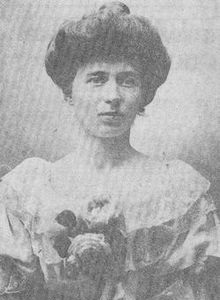 Recently I read a novel that was based on a true story, called “The Alice Network,” by Kate Quinn. Knowing the book was a novel, I assumed that it was entirely fictional, but then I began to wonder, so I researched “The Alice Network” for myself. I found that “The Alice Network” was a very much true story, even if some of the characters in the story were fictional. The head of the Alice Network, Louise Marie Jeanne Henriette de Bettignies, was very much a real person.
Recently I read a novel that was based on a true story, called “The Alice Network,” by Kate Quinn. Knowing the book was a novel, I assumed that it was entirely fictional, but then I began to wonder, so I researched “The Alice Network” for myself. I found that “The Alice Network” was a very much true story, even if some of the characters in the story were fictional. The head of the Alice Network, Louise Marie Jeanne Henriette de Bettignies, was very much a real person.
Louise Marie Jeanne Henriette de Bettignies was born on July 15, 1880 to Henri de Bettignies and Julienne Mabille de Poncheville. She was fluent in French and English, with a good mastery in German and Italian. It made her a perfect candidate for the spy network. Louise became a French secret agent who spied on the Germans for the British during World War I using the pseudonym of Alice Dubois, hence “The Alice Network.” She had under her direction, a number of men and women who mainly worked in the area of Lille, in German occupied France. Her people listened inconspicuously to the talk of the German soldiers when they were not aware, and therefore, not careful to guard their tongues. The gleaned intel was then passed to couriers, of which Louise was one, to be transported by car, train, or on foot to the military leaders they worked for. It was a dangerous occupation, but the spies in the network wanted to serve in the war effort, and this was their chance.
Spies in “The Alice Network” and other such networks, went to work in jobs that were basically normal everyday jobs. They became waitresses, singers, shop workers, all in areas frequented by the enemy. They swallowed their disgust, in order to become almost invisible to the Germans. They never told anyone that they spoke German, because the Germans felt comfortable talking in front of these people who, they thought, couldn’t understand a word they said. It gave the spy networks just the edge they needed. Some spies, like Louise, spent time in makeshift hospitals writing letters in German dictated by dying Germans to their families. Dying men aren’t always careful with the information they give. A wealth of information was passed from these networks to the intelligence officers, and it often proved to be invaluable.
Louise lived with her sister, Germaine at 166 rue d’Isly. From October 4 to 13, 1914, by turning the only cannon that the Lille troops had, the defenders succeeded in deceiving the enemy and holding them for several days under an intense battle that destroyed more than 2,200 buildings and houses, particularly in the area of the station. Louise de Bettignies, aged 28, making full use of the four languages she spoke, including German and English. Through the ruins of Lille, she ensured the supply of ammunition and food to the soldiers who were still firing on the attackers. Then, since she had been a citizen of Lille since 1903, Louise made the decision in October 1914, to engage in resistance and espionage. Due in part to her ability to speak French, English, German, and Italian, she ran a vast intelligence network from her home in the North of France on behalf of the British army and the MI6 intelligence service under the pseudonym Alice Dubois. This network provided important information to the British through occupied Belgium and the Netherlands. The network is estimated to have saved the lives of more than a thousand British soldiers during the 9 months of full operation from January to September 1915.
“The Alice Network” of a hundred people, mostly in forty kilometers of the front to the west and east of Lille, was so effective that she was nicknamed by her English superiors “the queen of spies.” She smuggled men to England, provided valuable information to the Intelligence Service, and prepared for her superiors in London a grid map of the region around Lille. When the German army installed a new battery of artillery, even camouflaged, this position was bombed by the Royal Flying Corps within eight days. Another opportunity allowed her to report the date and time of passage of the imperial train carrying the Kaiser on a secret visit to the front at Lille. During the approach to Lille, two British aircraft bombed the train and emerged, but missed their target. The German command did not understand the unique situation of these forty kilometers of “cursed” front (held by the British) out of nearly seven hundred miles of front. One of her last messages announced the preparation of a massive German attack on Verdun in early 1916. The information was relayed to the French commander who refused to believe it. Incredible!!! After all her success, this worthless French commander refused to believe her. Idiot!!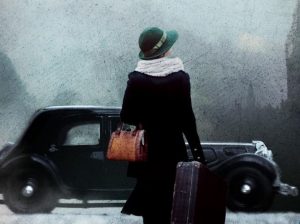
Louise was arrested by the Germans on October 20, 1915 near Tournai. On March 16, 1916, in Brussels, she was sentenced to forced labor for life. After being held for three years, she died on September 27, 1918 as a result of pleural abscesses poorly operated upon at Saint Mary’s Hospital in Cologne. Her body was repatriated on February 21, 1920. On March 16, 1920 a funeral was held in Lille in which she was posthumously awarded the Cross of the Legion of Honor, the Croix de guerre 1914-1918 with palm, and the British Military Medal, and she was made an Officer of the Order of the British Empire. Her body is buried in the cemetery of Saint-Amand-les-Eaux.

 Every year, my husband, Bob and I go to the Black Hills to go hiking and just to enjoy the area. It’s close to our home in Casper, Wyoming, and it just never gets old. Our favorite tourist site there is Mount Rushmore, and we try to stop in there every year. Mount Rushmore is such a special place, filled with patriotism and honor, but there are things I didn’t know about this, my favorite monument.
Every year, my husband, Bob and I go to the Black Hills to go hiking and just to enjoy the area. It’s close to our home in Casper, Wyoming, and it just never gets old. Our favorite tourist site there is Mount Rushmore, and we try to stop in there every year. Mount Rushmore is such a special place, filled with patriotism and honor, but there are things I didn’t know about this, my favorite monument.
Gutzon Borglum was an amazing man. He designed and built Mount Rushmore between the years of 1927 and 1941. During the years of work, no one was ever killed, a credit to the safety measures put in place by Borglum. Originally the monument was planned as a tribute to the wild west, but Borglum had other ideas. Personally I like his ideas much better. A tribute to patriotism and honor is a much more fitting idea. The presidents Borglum chose were representative of specific aspects of history. His original plan was to carve the figures of these four men from head to waist, but with Borglum’s March 6, 1941 passing, came the beginning of the end of the monuments carving. Borglum’s son took over the carving, and at first it continued as normal, but the beginning of World War II greatly hampered things, and the monument was declared finished on October 31, 1941. Not only were the bodies of the presidents never finished, but Lincoln’s ear was also never finished. Somehow, Lincoln’s missing ear was something I never really noticed.
About 90% of the monument’s carving was done with dynamite. The dynamite stripped off the rough outer layers of stone, and then the minute details were finished by hand. In all, the workers blasted away more that 450,000 tons of rock. If you look below some of the viewing areas at the base of the mountain, you can still see the drill holes in the rock that was blasted away. It’s quite interesting to see how it was done. In all there were about 400 works who carved the mountain, being paid a modest wage of 45 to 75 cents an hour, for their 
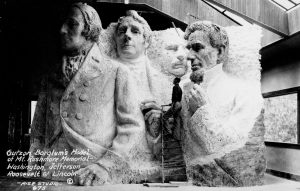 extraordinary efforts. These days he probably couldn’t have hired any workers for that wage, but those were very different times. These men worked very hard doing grueling work and didn’t complain. I believe they could see the vision of their boss, and I think most were proud to be a part of such an amazing project. In many ways, I wish the project could have been finished. I think the final design would have been an amazing work of art. Nevertheless, I love the mountain monument, finished or not.
extraordinary efforts. These days he probably couldn’t have hired any workers for that wage, but those were very different times. These men worked very hard doing grueling work and didn’t complain. I believe they could see the vision of their boss, and I think most were proud to be a part of such an amazing project. In many ways, I wish the project could have been finished. I think the final design would have been an amazing work of art. Nevertheless, I love the mountain monument, finished or not.
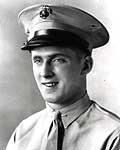 For Corporal Charles Joseph Berry, March 3, 1945 was just another day in the trenches…at least that was how it began. By days end, the war would be all over for Corporal Berry…as would his life. At this point, many people would expect that Corporal Berry would be “just another war statistic,” and they would be right, to a small degree. Corporal Berry was a war statistic, but it was the way he died that changed everything…that made him a hero!!
For Corporal Charles Joseph Berry, March 3, 1945 was just another day in the trenches…at least that was how it began. By days end, the war would be all over for Corporal Berry…as would his life. At this point, many people would expect that Corporal Berry would be “just another war statistic,” and they would be right, to a small degree. Corporal Berry was a war statistic, but it was the way he died that changed everything…that made him a hero!!
Charles Joseph Berry was born on July 10, 1923 in Lorain, Ohio, and graduated from Clearview High School in Lorain in 1941. After graduation he went to work as a truck driver for a moving company. When World War II broke out, Corporal Berry enlisted in the Marine Corps in Cleveland, Ohio, on October 1, 1941. He was 18 years old. He was sent to Parris Island, South Carolina for basic training. Following his basic training, he was stationed to the Marine Barracks at Quantico, Virginia, but shortly afterwards was ordered to the Marine Barracks, New River, North Carolina, for parachute training. He was promoted to private first class on June 2, 1942, after qualifying as a parachutist.
On March 11, 1943, PFC Berry sailed from San Diego, California, arriving later that month in New Caledonia with the 1st Parachute Battalion. He left New Caledonia in September 1943, arriving in the Solomon Islands a few weeks after his departure. Then, in October 1943, he went to Vella La Vella, where he remained for one month. In November 1943, he landed at Bougainville, and during that campaign, took part in the raid at Koairi Beach and in the Empress Augusta Bay action. Prior to returning to the United States in February 1944, he spent a short time at Guadalcanal. Following his arrival at Camp Elliott, San Diego, he joined the newly organized 5th Marine Division in early 1944. In July he departed for the Hawaiian Islands with that division. He was advanced to corporal on July 22, 1944. He landed on Iwo Jima on D-Day, February 19, 1945.
On March 3, 1945, Corporal Berry was killed during a battle that would win him the Medal of Honor. Corporal Berry while stationed in the front lines, manned his weapon with alert readiness as he maintained a constant vigil with other members of his guncrew during the hazardous night hours of March 2nd. Infiltrating Japanese soldiers launched a surprise attack shortly after midnight in an attempt to overrun his position. Corporal Berry engaged in a pitched hand-grenade duel, returning the dangerous weapons with prompt and deadly accuracy until an enemy grenade landed in the foxhole. Corporal Berry gave no thought to his own safety, but determined to save his comrades, he unhesitatingly chose to sacrifice himself and immediately dived on the deadly grenade. His body absorbed the shattering violence of the exploding charge, and protected the others from serious injury. Corporal Berry had never given it another thought. He just did it, and then it was all over. He gave his life so that his fellow marines might carry on the relentless battle against a ruthless enemy, and “his superb valor and unfaltering devotion to duty in the face of certain death reflect the highest credit upon himself and upon the United States Naval Service.”
Corporal Berry was buried in the 5th Marine Division Cemetery on Iwo Jima, but was later reinterred in Elmwood Cemetery, Lorain, Ohio, in 1948. He was honored for “conspicuous gallantry and intrepidity at the risk of his life above and beyond the call of duty” as a member of a machine-gun crew, serving with the 1st Battalion, 26th Marines, 5th Marine.
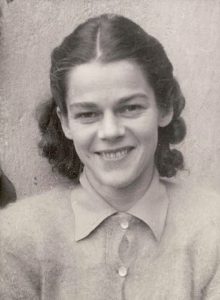 Milly Elise “Lise” Borsum was a Norwegian resistance member during World War II. Born on September 18, 1908 in Kristiania, she was the daughter of pianist and composer Eyvind Alnaes and his wife Emilie Thorne. She was married to physician Ragnar Borsum from 1930 to 1949, and was mother of actress Bente Borsum.
Milly Elise “Lise” Borsum was a Norwegian resistance member during World War II. Born on September 18, 1908 in Kristiania, she was the daughter of pianist and composer Eyvind Alnaes and his wife Emilie Thorne. She was married to physician Ragnar Borsum from 1930 to 1949, and was mother of actress Bente Borsum.
During the Holocaust, Lise and her husband had compassion on the Jewish people, making the fateful decision to harbor them from the Nazis. In April of 1943, Lise and her husband were arrested and incarcerated at the Grini concentration camp for two months. They had been members of a network which helped Jewish people escape to Sweden. On June 28, 1943, she was sent to Germany, with MS Monte Rosa from Oslo 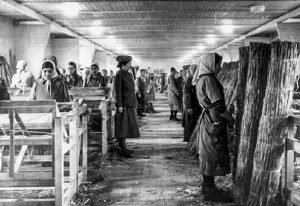 to Arhus, and further with railway transport to Hamburg. She spent a short time at the Hütten Gefängnis in Hamburg before ending up as a Nacht und Nebel prisoner at the Ravensbrück concentration camp, which was a camp specifically for women. Nacht und Nebel was a directive issued by Adolf Hitler on December 7, 1941 targeting political activists and resistance “helpers” in World War II to be imprisoned or killed. Their families and the population usually knew nothing of their fate or whereabouts They were the Nazi state’s alleged offenders, often without trial or conviction or even charges. Victims who disappeared in these Night and Fog actions were often never heard from again. The prisoners usually had their heads shaved and their dignity removed in any horrific way
to Arhus, and further with railway transport to Hamburg. She spent a short time at the Hütten Gefängnis in Hamburg before ending up as a Nacht und Nebel prisoner at the Ravensbrück concentration camp, which was a camp specifically for women. Nacht und Nebel was a directive issued by Adolf Hitler on December 7, 1941 targeting political activists and resistance “helpers” in World War II to be imprisoned or killed. Their families and the population usually knew nothing of their fate or whereabouts They were the Nazi state’s alleged offenders, often without trial or conviction or even charges. Victims who disappeared in these Night and Fog actions were often never heard from again. The prisoners usually had their heads shaved and their dignity removed in any horrific way 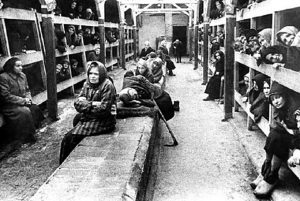 imaginable to bring them into submission.
imaginable to bring them into submission.
She was held at Ravensbrück until April 8, 1945, when the surviving Scandinavian prisoners were transported home with the White Buses organized by the Swedish Red Cross. She was one of the blessed few who walked away alive from the concentration camps. Many prisoners, political or otherwise were killed, starved, beaten, or worked to death. Lise Borsum managed to live through it. Later in life, she was known for her writings and for organizing work after the war. She went on to live a long life, dying on August 29, 1985 at the age of 76. She had done her part to help the Jewish people during the Holocaust, and she was not sorry.
 Nine parachutes floated silently to the Earth on a calm February 27, 1943. Their mission was to blow up a Nazi-controlled heavy water plant in Vemork, Norway. The men had been specially trained by British Special Operations, and they had been chosen to carry out this vital mission. Heavy water was a crucial element in the production of plutonium, an ingredient for the nuclear bomb Hitler’s scientists were feverishly attempting to build. The plant at Vemork was the only such facility in the world.
Nine parachutes floated silently to the Earth on a calm February 27, 1943. Their mission was to blow up a Nazi-controlled heavy water plant in Vemork, Norway. The men had been specially trained by British Special Operations, and they had been chosen to carry out this vital mission. Heavy water was a crucial element in the production of plutonium, an ingredient for the nuclear bomb Hitler’s scientists were feverishly attempting to build. The plant at Vemork was the only such facility in the world.
The plant at Vemork was heavily fortified, and it remoteness made it impervious to bombing. It could only be destroyed on site, and for the men, parachuting in was just the beginning of the mission. The men would also be required to scale a 500-foot-high cliff in the dead of winter, and infiltrate a heavily guarded basement laboratory. The nine Norwegians, led by 23 year old Joachim Ronneborg, did just that, successfully detonating  explosives that shut down the facility. The destruction of the Vemork plant was crucial in Albert Speer’s decision to halt attempts to produce a Nazi atomic weapon.
explosives that shut down the facility. The destruction of the Vemork plant was crucial in Albert Speer’s decision to halt attempts to produce a Nazi atomic weapon.
The United States began early nuclear research first, but Germany was moving forward with its own nuclear energy research and atomic bomb program. In April 1939, Germany began a secret program called the Uranverein or “Uranium Club.” The German program recruited some of the top scientific minds in Germany, including recent Nobel Prize winner Werner Heisenberg. It was led by physicist Kurt Diebner. The Uranium Club was getting dangerously close to making an atomic weapon, and it had to be stopped. Hitler could not win this one.
Had nine Norwegian soldiers not trekked into the cold on that day in February 1943, it is hard to say how much 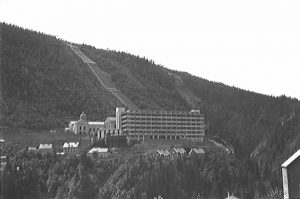 longer the war might have lasted, or how much destruction might have been carried out. Their brave and selfless act saved many lives to be sure. At the very least, Operation Gunnerside should be recognized as one of the most successful SOE missions during World War II. Ronneborg and his squad fully expected this mission to be a one-way trip. It never occurred to them that they might survive. Nevertheless, the operation brought with it zero casualties, and temporarily destroyed the Germans’ single source of heavy water at the time. Ronneborg later commented that “London could have suffered a different fate and ended up ‘looking like Hiroshima’ if his team had failed.”
longer the war might have lasted, or how much destruction might have been carried out. Their brave and selfless act saved many lives to be sure. At the very least, Operation Gunnerside should be recognized as one of the most successful SOE missions during World War II. Ronneborg and his squad fully expected this mission to be a one-way trip. It never occurred to them that they might survive. Nevertheless, the operation brought with it zero casualties, and temporarily destroyed the Germans’ single source of heavy water at the time. Ronneborg later commented that “London could have suffered a different fate and ended up ‘looking like Hiroshima’ if his team had failed.”
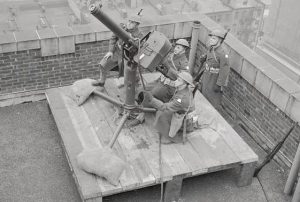 When the Japanese attacked Pearl Harbor, everything changed in an instant. Prior to December 7, 1941, no one had guessed that the Japanese planes could actually sneak up on a place as big as Pearl Harbor…much less 353 Imperial Japanese aircraft (including fighters, level and dive bombers, and torpedo bombers) in two waves, launched from six aircraft carriers. All in all, it was enough to cause a nation to be a little freaked out…to say the least.
When the Japanese attacked Pearl Harbor, everything changed in an instant. Prior to December 7, 1941, no one had guessed that the Japanese planes could actually sneak up on a place as big as Pearl Harbor…much less 353 Imperial Japanese aircraft (including fighters, level and dive bombers, and torpedo bombers) in two waves, launched from six aircraft carriers. All in all, it was enough to cause a nation to be a little freaked out…to say the least.
In the frantic weeks that followed the Pearl Harbor attack, the United States began to look at everything differently. Japanese-Americans were no longer trusted as loyal. Planes coming in to our coasts were feared…even when we knew who they were. Many Americans believed that enemy raids on the continental United States were imminent. Then, on December 9, 1941, everything came to a head when unsubstantiated reports of approaching aircraft caused a minor invasion panic in New York City that sent stock prices falling. On the West Coast, inexperienced pilots and radar men mistook fishing boats, logs, and even whales for Japanese warships and submarines. People were seeing the enemy everywhere, and everyone was tense. After US Secretary of War Henry Stimson warned that American cities should be prepared to accept “occasional blows” from enemy forces, the mood changed. Nobody was feeling okay with enemy blows, occasional or otherwise.
Then, on February 23, 1942, a Japanese submarine surfaced off the coast of Santa Barbara, California, shooting over a dozen artillery shells at an oil field and refinery. No one died in the attack, and the coast received only minor damage, but the attack marked the first time that the mainland United States had been bombed during World War II. The day after the oil field attack, people were still paranoid, and the raw nerves brought itchy trigger fingers. The events of that day aligned to produce one of the most shocking home front incidents of the war. It began on the evening of February 24, 1942, when naval intelligence instructed units on the California coast to steel themselves for a potential Japanese attack. For the next few hours, they military calmly prepared for what they perceived inevitable attack. Shortly after 2am on February 25, military radar picked up what appeared to be an enemy contact some 120 miles west of Los Angeles. Air raid sirens sounded and a citywide blackout was put into effect. Within minutes, the troops manned anti-aircraft guns and began sweeping the skies with searchlights.
Just after 3am the shooting started, triggered by reports of an unidentified object in the skies. The troops in Santa Monica unleashed a hail of anti-aircraft and .50 caliber machine gun fire. Before long, many of the city’s other coastal defense weapons had joined in. The Los Angeles Times wrote, “Powerful searchlights from countless stations stabbed the sky with brilliant probing fingers, while anti-aircraft batteries dotted the heavens with beautiful, if sinister, orange bursts of shrapnel.” The entire scene was so chaotic over the next several  minutes, that it appeared Los Angeles was indeed under attack. Still, many of those who looked skyward saw nothing, but smoke and the glare of ack-ack fire. “Imagination could have easily disclosed many shapes in the sky in the midst of that weird symphony of noise and color,” Coastal Artillery Corps Colonel John G. Murphy later wrote. “But cold detachment disclosed no planes of any type in the sky…friendly or enemy.”
minutes, that it appeared Los Angeles was indeed under attack. Still, many of those who looked skyward saw nothing, but smoke and the glare of ack-ack fire. “Imagination could have easily disclosed many shapes in the sky in the midst of that weird symphony of noise and color,” Coastal Artillery Corps Colonel John G. Murphy later wrote. “But cold detachment disclosed no planes of any type in the sky…friendly or enemy.”
Still, for many others along the coast, the threat appeared to be very real. From across the city reports poured in describing Japanese aircraft flying in formation, as well as paratroopers. There was even a claim of a Japanese plane crash landing in the streets of Hollywood. “I could barely see the planes, but they were up there all right,” a coastal artilleryman named Charles Patrick later wrote in a letter. “I could see six planes, and shells were bursting all around them. Naturally, all of us fellows were anxious to get our two-cents’ worth in and, when the command came, everybody cheered like a son of a gun.” The barrage continued for over an hour, and by the time a final “all-clear” order was given later that morning, Los Angeles’ artillery batteries had pumped over 1,400 rounds of anti-aircraft ammunition into the sky.
It was only in the light of day that the American military units made a puzzling discovery: there appeared to have been no enemy attack. “Although reports were conflicting and every effort is being made to ascertain the facts, it is clear that no bombs were dropped and no planes were shot down,” read a statement from the Army’s Western Defense Command. The counter-attack was, in reality, the whole attack. The only damage during the “battle” had come from friendly fire. Anti-aircraft shrapnel rained down across the city, shattering windows and ripping through buildings. One dud landed in a Long Beach golf course, and several residents had their homes partially destroyed by 3-inch artillery shells. There were no serious injuries from the shootout, but it was reported that at least five people had died as a result of heart attacks and car accidents that occurred during the extended blackout. In a preview of the hysteria that would soon accompany the Japanese internment, authorities also arrested some 20 Japanese-Americans for allegedly trying to signal the nonexistent aircraft.
Over the next few days, government and media outlets issued contradictory reports on what later became known as the “Battle of Los Angeles.” Secretary of the Navy Frank Knox dismissed the firefight as a false alarm brought on by “jittery nerves,” but Secretary of War Henry Stimson echoed Army brass in saying that at least 15 planes had buzzed the city. He even advanced the provocative theory that the phantom fighters might have been commercial aircraft “operated by enemy agents” hoping to strike fear into the public. Stimson later backpedaled his claims, but there was still the matter of the thousands of military personnel and civilians who 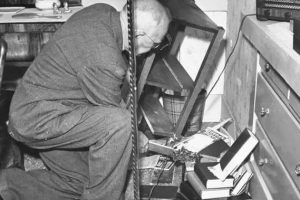 claimed to have seen aircraft in the skies over Los Angeles. According to an editorial in the New York Times, some eyewitnesses had spied “a big floating object resembling a balloon,” while others had spotted anywhere from one plane to several dozen. “The more the whole incident of the early morning of February 25 in the Los Angeles district is examined,” the article read, “the more incredible it becomes.” Politics had stepped in to put its spin on matters, and I suppose that with all that, the truth might never be known…other than no plane was found crashed in Hollywood. In reality, the whole “battle” was brought about by anxious nerves and itchy trigger fingers.
claimed to have seen aircraft in the skies over Los Angeles. According to an editorial in the New York Times, some eyewitnesses had spied “a big floating object resembling a balloon,” while others had spotted anywhere from one plane to several dozen. “The more the whole incident of the early morning of February 25 in the Los Angeles district is examined,” the article read, “the more incredible it becomes.” Politics had stepped in to put its spin on matters, and I suppose that with all that, the truth might never be known…other than no plane was found crashed in Hollywood. In reality, the whole “battle” was brought about by anxious nerves and itchy trigger fingers.
 As a grandmother and great grandmother, I want my grandchildren to love me and want me around, but even more that that, I want my grandchildren to respect me, because when it comes down to it, your good name is really the best thing to pass down to your kids, whether they take your last name or not. Your name is your identity, oh sure, you can change it, but once you have ruined your reputation, not much can fix it.
As a grandmother and great grandmother, I want my grandchildren to love me and want me around, but even more that that, I want my grandchildren to respect me, because when it comes down to it, your good name is really the best thing to pass down to your kids, whether they take your last name or not. Your name is your identity, oh sure, you can change it, but once you have ruined your reputation, not much can fix it.
As a prime example, take the case of Rainer Höss. The name might not ring any bells to you, and mostly that would be due to the fact that the English pronunciation of the name, doesn’t really tell you what the name is. Rainer Höss is the grandson of the former commandant of Auschwitz, Rudolph Höss, and he knows first-hand how bad it can be when your name has been ruined.
In 1933, Rudolph Höss joined the SS in Nazi Germany, and in 1934 he was attached to the SS at Dachau. On August 1, 1938, Rudolph Höss was appointed as adjutant of the Sachsenhausen concentration camp until his appointment as Kommandant of the newly-built camp at Auschwitz in early 1940. In May 1941, SS commander Heinrich Himmler told Höss that Hitler had given orders for the final solution of the Jewish question and that “I have chosen the Auschwitz camp for this purpose.” It was then that Höss converted Auschwitz into an extermination camp and installed gas chambers and crematoria that were capable of killing 2,000 people every hour. He was brutally meticulous…counting corpses with the cool dedication of a trained bookkeeper, he went home each night to the loving embrace of his own family who lived on the camp grounds. Rudolph Höss had no qualms about watching millions of innocent human beings dissolve in the gas chambers, burn in the crematoriums and their teeth melt into gold bars, Höss even wrote poetry about the “beauty” of Auschwitz. He was a monster of epic proportions.
Nazi leader Adolf Eichmann recounted in his memoirs how he was assigned in early 1942 to visit the Auschwitz death camp and report back to superiors on the killing of Jews. He wrote that the methods for killing were still crude, but these represented a gruesome foretaste of the factory-style gas chambers and crematoria that were to follow: “Höss, the Kommandant, told me that he used sulfuric acid to kill. Round cotton wool filters were soaked with this poison and thrown into the rooms where the Jews were assembled. The poison was instantly fatal. He burned the corpses on an iron grill, in the open air. He led me to a shallow ditch where a large number of corpses had just been burned.”
Höss eventually found that gassing by carbon monoxide was inefficient and introduced the cyanide gas Zyklon B. He later recalled: “The gassing was carried out in the detention cells of Block 11. Protected by a gas mask, I watched the killing myself. In the crowded cells, death came instantaneously the moment the Zyklon B was thrown in. A short, almost smothered cry, and it was all over…I must even admit that this gassing set my mind at rest, for the mass extermination of the Jews was to start soon, and at that time neither Eichmann nor I was certain as to how these mass killings were to be carried out. It would be by gas, but we did not know which gas and how it was to be used. Now we had the gas, and we had established a procedure.” Rudolph Höss not only “enjoyed” his work, but he was proud of his accomplishments.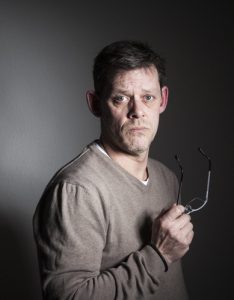
His family, or at least his grandson Ranier Höss was horrified by the legacy his grandfather so “lovingly” left him. He could not believe that his grandfather was not only proud of what he had done, but he liked it so much that he wanted to watch from inside the chamber. Rainer Höss has spent his whole life trying to escape the stigma of being related to Rudolph Höss. Rainer doesn’t expect to be forgiven…he knows that he will always be blamed for what his grandfather did, because his grandfather left him the name. His grandfather was proud his “accomplishments.” He honestly thought everyone would be proud. He honestly thought he was a hero.
Rainer Höss doesn’t expect to be “forgiven.” He knows it wasn’t his fault, but he understands the reasons people react the way they do, because it’s how he would react. That is the real legacy his “grandfather” left him. You see, for Rainer Höss…grandfather is an abstract word.
 In 1980, the United States started a national clean-up program called Adopt-A-Highway. I’m sure we have all seen the signs along the highway, although these days we are so used to them, that it’s easy to miss them, if we aren’t paying attention. Littering was a big problem when I was growing up. I recall everyone tossing trash out the window, while driving down the highway. Then a man, by the name of James Evans, an engineer for the Texas Department of Transportation (TxDOT), saw debris flying out of a pickup truck bed. Litter cleanup by the city was expensive, so Evans sought the help of local groups to sponsor the cleaning of sections of the highway. In addition, the efforts of Billy Black, a TxDOT public information officer, led to quarterly cleanup cycles, volunteer safety training, the issuing of reflective vests and equipment, and the posting of adopt-a-highway signs.
In 1980, the United States started a national clean-up program called Adopt-A-Highway. I’m sure we have all seen the signs along the highway, although these days we are so used to them, that it’s easy to miss them, if we aren’t paying attention. Littering was a big problem when I was growing up. I recall everyone tossing trash out the window, while driving down the highway. Then a man, by the name of James Evans, an engineer for the Texas Department of Transportation (TxDOT), saw debris flying out of a pickup truck bed. Litter cleanup by the city was expensive, so Evans sought the help of local groups to sponsor the cleaning of sections of the highway. In addition, the efforts of Billy Black, a TxDOT public information officer, led to quarterly cleanup cycles, volunteer safety training, the issuing of reflective vests and equipment, and the posting of adopt-a-highway signs.
Like any new idea, the Adopt-A-Highway program took a while to kick off. but in 1985, the Tyler Civitan Club became the first group to volunteer, adopting by two miles along US Route 69 just north of Loop 323 between Tyler and Interstate 20. It was the kick start the program needed. The program proved to be very successful and has since spread to 49 states, Puerto Rico, Canada, New Zealand, Australia, and Japan. Vermont has a similar program called “Green Up.”
Some states, such as Nevada, allow both Adopt-a-Highway and Sponsor-a-Highway programs. In both programs, an organization that contributes to the cleanup is allowed to post its name. That is where the similarity ends, however. While an adopting organization provides the volunteers who do the litter pickup, a sponsoring organization instead pays professional contractors to do the work. Safety concerns, make the latter more typical in highways with high traffic volumes.
There have been some controversies, such as when the KKK wanted to join. People were against it and some anger was stirred up. The Adopt-A-Highway program allows any organization to participate, which became a point of controversy when the Ku Klux Klan adopted a portion of Interstate 55 just south of St. Louis, Missouri. While legally the program had to uphold the groups’ rights to participate, public outcry and repeated destruction of its sign was a cause of concern. In November 2000, the section of highway was designated as the Rosa Parks Freeway after the famous civil rights figure. It was then that the problem began to work itself out. The KKK sponsorship was later dropped from the program for the group’s failure to fulfill its obligations, and the Missouri Department of Transportation adopted specific criteria to prohibit hate groups from future participation. However, the 8th Circuit Court of Appeals ruled that any attempt to bar the Klan from participation in the Adopt-a-Highway program on the basis of the group’s purpose is a violation of the First Amendment. The Supreme Court declined to hear the case, so the ruling stood.
In January 2005, the American Nazi Party adopted a stretch of the rural Sunnyview Road NE outside Salem, Oregon. Two signs were put up along the road that bore the names of the American Nazi Party and NSM. The signs, which cost $500 and were almost immediately subject to vandalism, have since been removed. The American Nazi Party’s chair, Rocky J. Suhayda, claimed to have no association with the Adopt a Highway program. In 2009, the state of Missouri renamed a section of highway after Rabbi Abraham Joshua Heschel, because it had been adopted by a neo-Nazi group. Rabbi Heschel fled the Nazis’ advance in Europe and became a  prominent theologian and civil rights advocate in the United States before his death in 1972. Rabbi Heschel’s daughter opposed this decision.
prominent theologian and civil rights advocate in the United States before his death in 1972. Rabbi Heschel’s daughter opposed this decision.
To me it seems that caring for the earth, and hate groups just don’t go together. I don’t understand why a law can’t be made, to stop hate groups from participation in this or anything else that is service oriented. I think that any group that joins to exploit the sensational aspect of things should be able to be banned, but that is my opinion. Economically, the program may be viewed as a way of getting around regulations prohibiting billboards next to a highway and on a per-view basis. Still, it is more economical than billboards.
 I read a book the other day, called “The Librarian of Auschwitz.” It is a true story about a woman named Dita Polachova , who at the age of 14 years was imprisoned at Auschwitz. I was moved by the sacrifices the people in her network made, as well as the many people I have read about in the past. We, in America, don’t often understand the need to sacrifice our own safety, and many people wouldn’t do it even if it was necessary. Dita was one of those people who would.
I read a book the other day, called “The Librarian of Auschwitz.” It is a true story about a woman named Dita Polachova , who at the age of 14 years was imprisoned at Auschwitz. I was moved by the sacrifices the people in her network made, as well as the many people I have read about in the past. We, in America, don’t often understand the need to sacrifice our own safety, and many people wouldn’t do it even if it was necessary. Dita was one of those people who would.
She was in charge of eight books that someone had smuggled into Auschwitz, the first sacrifice. It was something that could have cost the smuggler his life, but he saw value in the ability to get the books into the hands of the family camp, and the children’s school at Auschwitz. The family camp, and the coordinated children’s school was unique to Auschwitz. Most camps did not allow families to stay together. In fact, most of the children were killed upon arrival at the camps. The family camp and the children’s school were the  brainstorm sacrifice Freddy Hirsch, who was a Jewish athlete, one of the great runners. He was almost impossible to beat. I don’t know if that was what gave him some pull or not, but he made a sacrifice that turned out to be the ultimate sacrifice. Fredy Hirsch would not survive Auschwitz. It wasn’t because the books were found, but rather that the Nazis were taking away the family camp and children’s school. He took his own life. He assumed that the precious books would be lost, but he had underestimated Dita, who managed to get the books back in their hiding place, where they were not found by the Nazis.
brainstorm sacrifice Freddy Hirsch, who was a Jewish athlete, one of the great runners. He was almost impossible to beat. I don’t know if that was what gave him some pull or not, but he made a sacrifice that turned out to be the ultimate sacrifice. Fredy Hirsch would not survive Auschwitz. It wasn’t because the books were found, but rather that the Nazis were taking away the family camp and children’s school. He took his own life. He assumed that the precious books would be lost, but he had underestimated Dita, who managed to get the books back in their hiding place, where they were not found by the Nazis.
Dita outlived the Nazi reign of terror and went on to lead a happy life, despite the memories that would haunt her for the rest of her life. She married Arvid Harnack, an author, who with the writer Adam Kuckhoff and his wife Greta, who with Mildred Fish-Harnack brought together a discussion circle which debated political perspectives on the time after the National Socialists’ expected downfall or overthrow. From these meetings arose what the Gestapo called the Red Orchestra resistance group.
The Red Orchestra, Die Rote Kapelle in German, or the Red Chapel as it was known in Germany, was the name given by the Gestapo to anti-Nazi resistance workers during World War II. The members included friends of Harro Schulze-Boysen and Arvid Harnack in Berlin, as well as groups working independently of these intelligence groups, working in Paris and Brussels, that were built up on behalf of Leopold Trepper on behalf of the Soviet Main Directorate of State Security. The Red Orchestra was neither  directed by Soviet communists nor under a single leadership but a network of groups and individuals, often operating independently contrary to legend. About 400 members are known by name at this time. They printed illegal leaflets hoping to incite civil disobedience, helped Jews and opposition escape the regime, documented the crimes of the Nazi regime, and forwarded military intelligence to the Allies. The public perception of the “Red Orchestra” is characterized by the transfigurations of the post-war years and the Cold War.
directed by Soviet communists nor under a single leadership but a network of groups and individuals, often operating independently contrary to legend. About 400 members are known by name at this time. They printed illegal leaflets hoping to incite civil disobedience, helped Jews and opposition escape the regime, documented the crimes of the Nazi regime, and forwarded military intelligence to the Allies. The public perception of the “Red Orchestra” is characterized by the transfigurations of the post-war years and the Cold War.
The network of people willing to risk their own lives during the Holocaust years was extensive. From Jews who risked their lives to make life better in and out of the camps, to non-Jews who risked their lives to fight against the atrocities of the Nazi Regime and the Third Reich. These were brave people who knew that bravery isn’t about being fearless, but rather being brave despite the fear. Their stories deserve to be told. They deserve recognition, because in the face of the worst odds, they took action anyway. That is true bravery, and true sacrifice.
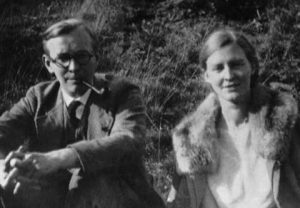 Mildred Fish was an American-German literary historian, translator, and later, a German Resistance fighter in Nazi Germany. They fell in love and married, moving to Germany right after. She met her future husband, Arvid Harnack in 1926. Arvid was a grad student at the University of Wisconsin-Milwaukee, and a Rockefeller Fellow from Germany. In Germany, Mildred worked in education and Arvid secured a position with the Reich Economic Ministry. Throughout the 1930s, Mildred and Arvid, became increasingly alarmed by Hitler’s rise to power. They could see that he had ulterior
Mildred Fish was an American-German literary historian, translator, and later, a German Resistance fighter in Nazi Germany. They fell in love and married, moving to Germany right after. She met her future husband, Arvid Harnack in 1926. Arvid was a grad student at the University of Wisconsin-Milwaukee, and a Rockefeller Fellow from Germany. In Germany, Mildred worked in education and Arvid secured a position with the Reich Economic Ministry. Throughout the 1930s, Mildred and Arvid, became increasingly alarmed by Hitler’s rise to power. They could see that he had ulterior 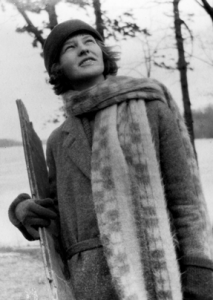 motives. They communicated with a close circle of associates who believed communism and the Soviet Union might be the only possible stumbling block to complete Nazi tyranny in Europe.
motives. They communicated with a close circle of associates who believed communism and the Soviet Union might be the only possible stumbling block to complete Nazi tyranny in Europe.
When Mildred came to the United States for a lecture tour in 1937, her family begged her to relocate permanently, but she refused and resumed her life in Germany. I suppose she thought she could be of better assistance there than in the United States. When war was declared in 1941, she did not leave with other Americans.  They couldn’t leave, because by then, Mildred and Arvid were involved with a communist espionage network known by the Gestapo as “The Red Orchestra”. The ring, which provided important intelligence to the USSR, was compromised and the members were arrested. I’m sure they knew this was a death sentence for them.
They couldn’t leave, because by then, Mildred and Arvid were involved with a communist espionage network known by the Gestapo as “The Red Orchestra”. The ring, which provided important intelligence to the USSR, was compromised and the members were arrested. I’m sure they knew this was a death sentence for them.
After they were tried as traitors, Arvid was sentenced to death and executed on December 22, 1942. Mildred was given a six year sentence, but Hitler refused to endorse her punishment. As only a dictator can, he insisted on a retrial, after which she was condemned on January 16, 1943. She was beheaded by guillotine at Plotzensee Prison on February 16, 1943. She was the only American female executed on the orders of Adolf Hitler. Because of her connection to possible communist sympathies and post-war McCarthyism, her story is virtually unknown in the United States.

